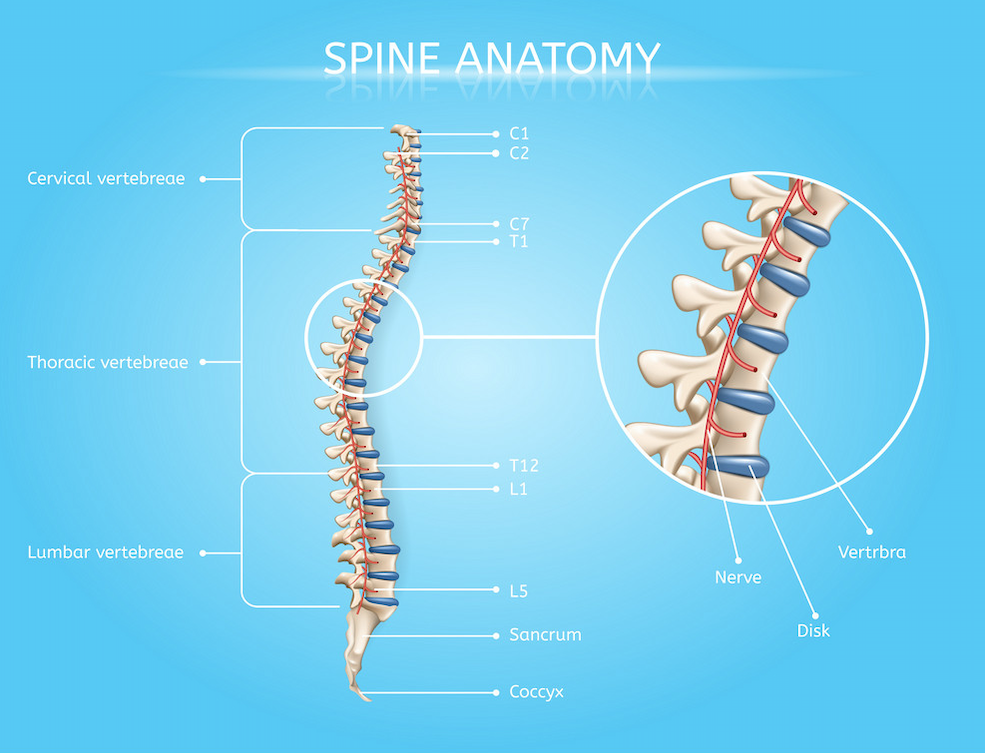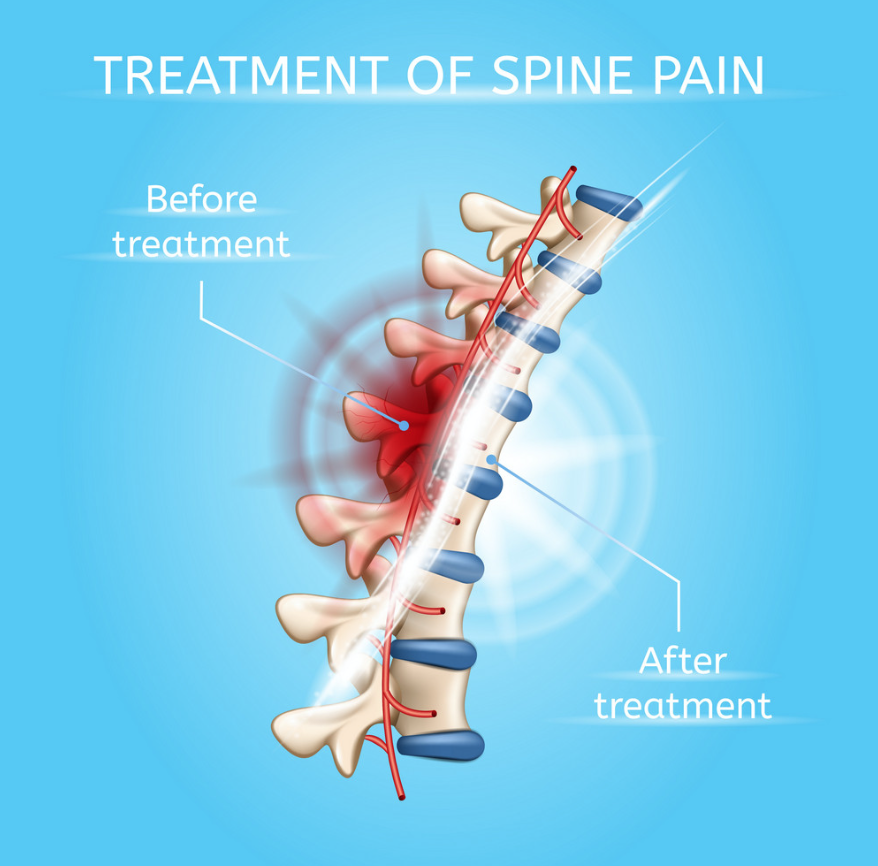Back Pain — Spine, Nerves, Discs
Your neuro-muscular-skeletal system is delicately balanced and interconnected. When a muscle is too weak or even too strong, it places abnormal stress on another muscle. The muscle that is stressed will compensate for a while, but eventually it will begin to hurt.
Strengthening the abdominal muscles can help prevent lower back pain. One of the chief causes of lower back pain is weak abdominal muscles. The abdominals hold the lower torso and if they are weak, the back muscles will be forced into strenuous positions and efforts.

Posture plays a vital role in maintaining a healthy back. Stand straight, with your stomach muscles firm and your buttocks tucked in. Don’t way your back or let a curve develop in the lumbar region. Also, try not to sink into one hip or the other. Good posture will not only save your back, it will also make you look much more attractive and fit.
Sitting is more stressful to the back than standing, so if you have a sedentary job, get up and move around often. Make sure you have a chair that has adjustable height, so you can sit with your feet flat on the floor and your knees slightly higher than your hips. Your chair should be firm, but not totally hard, with armrests and tilt-and-swivel mechanisms.
Rest on a good firm mattress, and never sleep on your stomach. Lying on our side with the hips and knees slightly flexed is the best position; lying face up is also okay.
Correct ways to move your body and back: “before lifting contract your stomach muscles”; “lift with your legs, not with your back”; “squat down and pick it up and stand up, as opposed to bending at the waist”; “don’t lift and twist at the same time”; “know your limits and get help when you’re lifting something that you know is too heavy”.

Arthritis, falls, accidents, and wear and tear on the spine’s bones and joints can also cause lumbar spinal canal stenosis. It starts gradually and develops over a long period of time.
Lumbar spinal canal stenosis is not the same as a ruptured disk. A ruptured or “herniated” disk usually pinches 1 or 2 nerves at a time. The pain caused by a ruptured disk in the lumbar spine is usually easy to diagnose and is known as sciatica.
Sciatica usually causes back pain that shoots down one leg along the path of the sciatic nerve. Sciatica can happen any time, not just when you stand up or start walking like it does with stenosis.
People who have lumbar spinal canal stenosis may have back or leg pain or numbness. Their legs might also feel cramped, tired or weak. These symptoms usually start when they are standing or walking. Often, the symptoms get better if they sit, crouch or lie in the fetal position (with your knees tucked up to your chest).
It’s thought that these positions “open” the lumbar canal and take the pressure off the nerves that go to the legs. As the spinal canal narrows, it can squeeze (compress) and irritate the nerve roots that branch out from the spinal cord , or it can squeeze and irritate the spinal cord itself. In severe cases, stenosis can cause partial or complete bowel or bladder incontinence.
Pain killers mask symptoms & enable you to use your back, potentially causing more damage! Restore damaged tissue today with effective back pain relief treatments and live your life! Get pain relief now. Improve your quality of life. Stem cells and regenerative treatments are booming, with procedures for back discs, especially.

